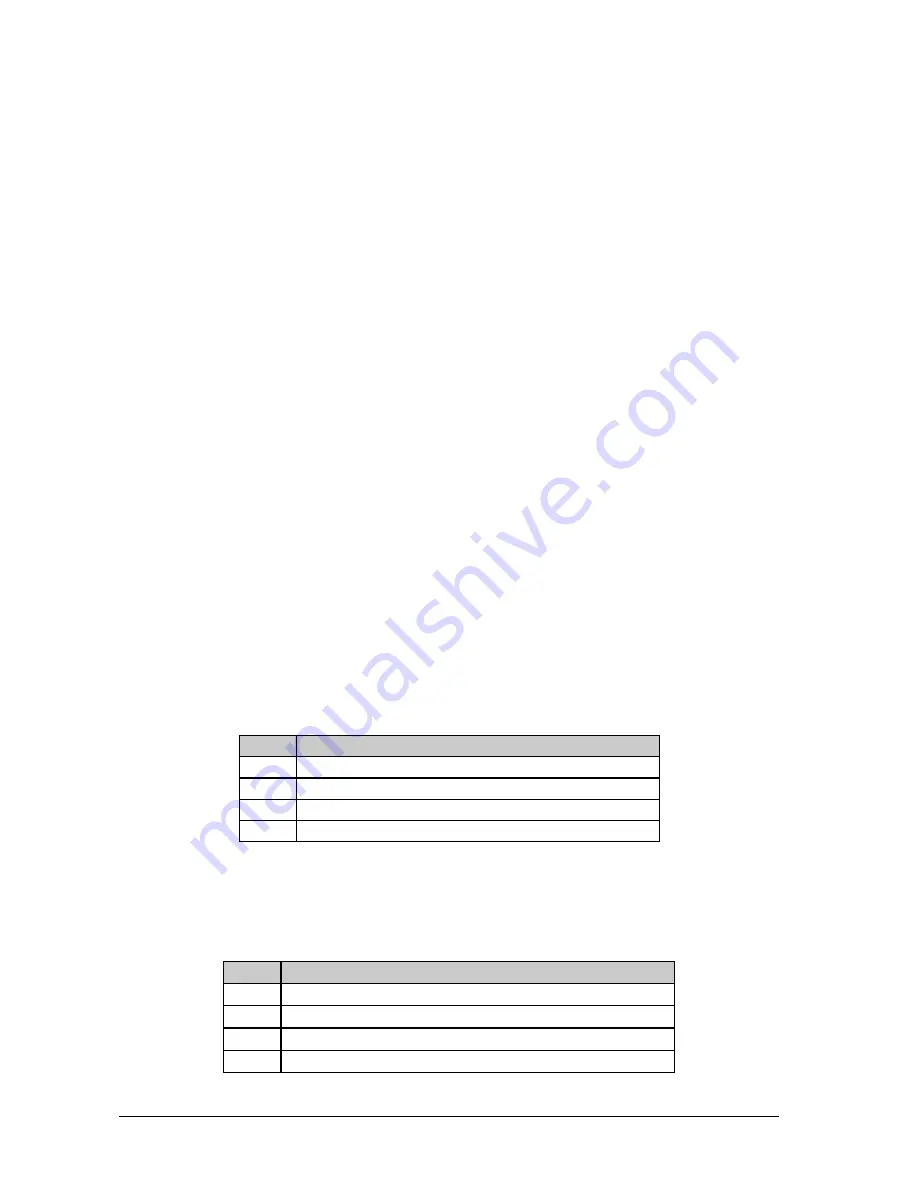
20
In Single-Shot and Auto mode it is not possible to change the filter parameters. In these modes you only are
allowed to call up the parameters. However you can convert such a filter into a parametric one with same
frequency and bandwidth, but with a gain of 0 dB. You simply have to press and keep the FILTER MODE key
for about 2 seconds. To reactivate a locked filter simply choose the Single-Shot or Auto mode.
5.4.4 Storing programs
Use the STORE key to store the program edited in section 5.4.3. Basically, all parameter changes in Para-
metric EQ mode can be saved. Filters working in Single-Shot or Auto mode will adjust and store the required
parameters automatically. Example:
s
You recall a program for editing. Then you edit the preset as desired using the function keys and the jog
wheel. During this process, the flashing STORE key reminds you that the preset settings have been
changed but not saved yet. Press the STORE key once. The display reads the current preset number and
starts flashing. To keep the original preset, use the jog wheel to select a different preset that can be
overwritten. Press the STORE key again to save the edits to the selected preset. If you wish to overwrite
the original preset, simply press the STORE key twice (after editing) to save all changes you have made.
+
Whenever you have edited a preset and pressed the STORE key twice, all previous settings in
this preset are erased and overwritten with the new parameter values. However, if you wish to
keep the original preset, use the jog wheel to select another preset
before you press the STORE
key a second time.
5.5 MIDI control
Use the MIDI key combination to select the MIDI parameters you wish to adjust. For this purpose press and
keep the IN/OUT and the STORE keys for about two seconds. All parameters can be edited with the jog
wheel and the IN/OUT key. The MIDI menu includes six pages which you can select by pressing the IN/OUT
key (forwards) and the STORE key (backwards) several times.
On the first page you can select the MIDI channel. The display reads a small “c” (= channel). The jog wheel
adjusts a channel from 1 through 16. To switch off the MIDI function simply select the “0” value (displayed as
“-”).
On the second page you can select MIDI Omni mode, i.e. the unit transmits/receives on all 16 MIDI channels.
The display reads “O” (=Omni). Use the jog wheel to activate (“1”) or deactivate (“0”) Omni mode.
The third page allows for configuring controller commands. On its right-hand side, the display reads a capital
“C” (=Controller). The jog wheel selects one of the following four controller modes:
Display
Mode
0
No controller data are transmitted
1
Controller data are received but not transmitted
2
Controller data are transmitted but not received
3
Controller data are transmitted and received
Table 5.2: Controller settings
The fourth page gives you access to the program change setup. The display reads a capital “P” (=Program).
Here, too, four modes can be selected with the jog wheel, as follows:
Display
Mode
0
No program change data are transmitted
1
Program change data are received but not transmitted
2
Program change data are transmitted but not received
3
Program change data are transmitted and received
Table 5.3: Program change settings
5. OPERATION



























